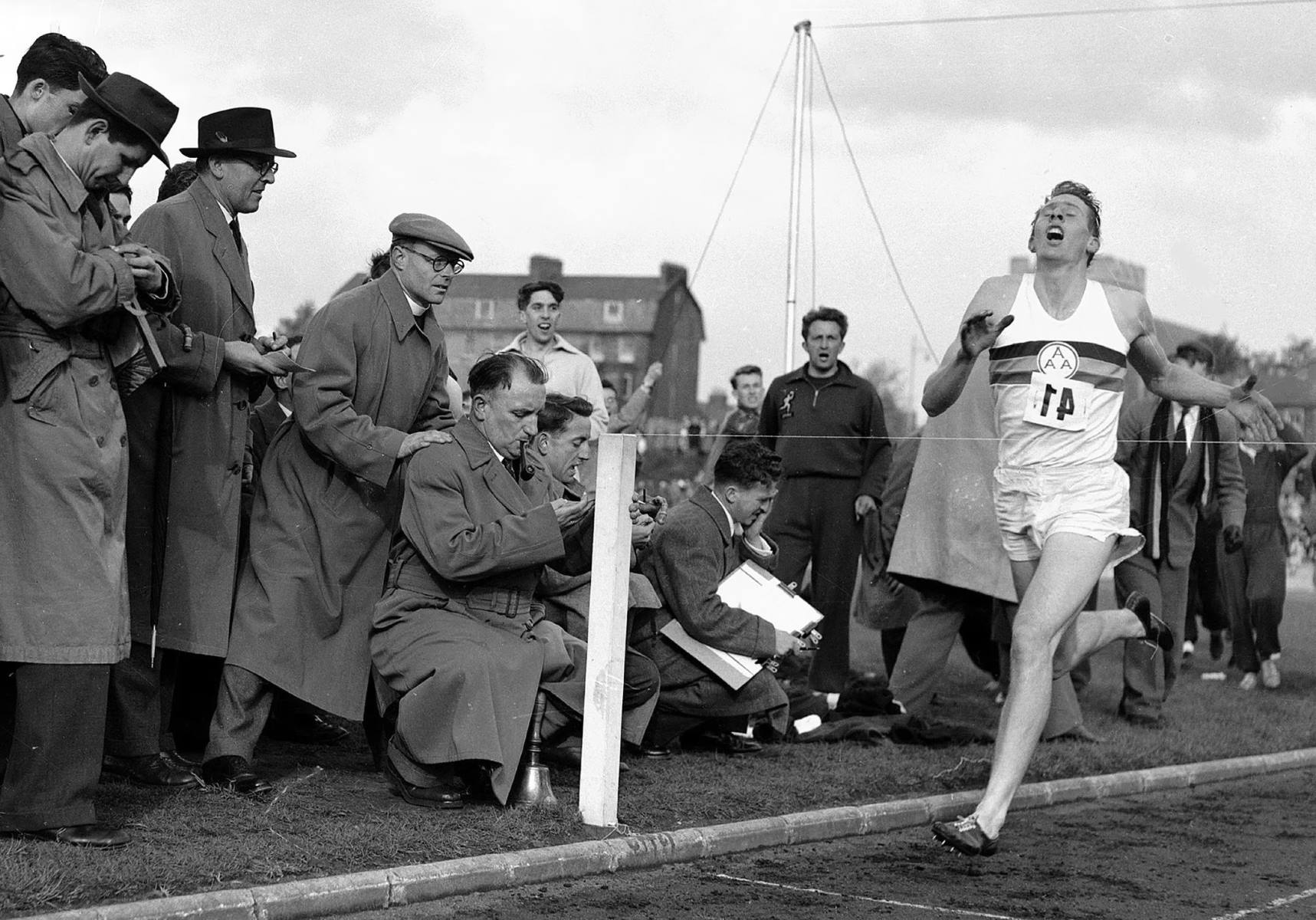Home>Training for Specific Goals>Speed Work>4 Efficient 20-minute Running Workouts For Quick Results


Speed Work
4 Efficient 20-minute Running Workouts For Quick Results
Published: February 25, 2024
Improve your speed and endurance with these 20-minute running workouts. Get quick results with these efficient speed work exercises.
(Many of the links in this article redirect to a specific reviewed product. Your purchase of these products through affiliate links helps to generate commission for Therunningadvisor.com, at no extra cost. Learn more)
Table of Contents
- The benefits of 20-minute running workouts
- Workout 1: Interval training for speed and endurance
- Workout 2: Hill sprints for strength and power
- Workout 3: Fartlek training for variety and mental toughness
- Workout 4: Tempo runs for pacing and stamina
- Tips for maximizing results in 20-minute running workouts
The benefits of 20-minute running workouts
Engaging in 20-minute running workouts offers a multitude of benefits that can significantly impact your overall fitness and well-being. Despite their relatively short duration, these workouts have the potential to yield remarkable results, making them an appealing option for individuals with busy schedules or those seeking efficient exercise routines. Let's delve into the compelling advantages of incorporating 20-minute running workouts into your fitness regimen.
-
Time-Efficiency: In today's fast-paced world, time is a precious commodity. 20-minute running workouts provide an effective means of maximizing your exercise routine within a limited timeframe. Whether you're a working professional, a busy parent, or someone with numerous commitments, these brief yet impactful workouts enable you to efficiently allocate time for physical activity without sacrificing other essential responsibilities.
-
Improved Cardiovascular Health: Engaging in regular 20-minute running sessions can significantly enhance cardiovascular health. This form of aerobic exercise strengthens the heart, improves circulation, and enhances the body's ability to utilize oxygen. Over time, consistent participation in these workouts can contribute to reduced risk factors associated with cardiovascular diseases, ultimately promoting a healthier heart and overall well-being.
-
Enhanced Metabolism: Short, intense running workouts can stimulate the metabolism, leading to increased calorie expenditure both during and after the exercise session. This can be particularly advantageous for individuals aiming to manage their weight or improve body composition. The metabolic benefits of 20-minute running workouts extend beyond the duration of the exercise, potentially promoting fat loss and lean muscle development over time.
-
Mental Clarity and Stress Reduction: Running, even for a brief 20-minute period, can have profound effects on mental well-being. The release of endorphins during exercise can elevate mood, reduce stress, and enhance mental clarity. This can be especially beneficial during hectic days or high-pressure situations, serving as a valuable outlet for stress relief and mental rejuvenation.
-
Versatility and Accessibility: 20-minute running workouts offer a versatile and accessible fitness option for individuals of varying fitness levels. Whether you prefer outdoor running, treadmill workouts, or interval training, the flexibility of these sessions allows for customization based on personal preferences and fitness goals. Additionally, the minimal equipment required for running makes it an accessible form of exercise that can be performed virtually anywhere, eliminating barriers to consistent physical activity.
Incorporating 20-minute running workouts into your fitness routine can yield substantial benefits, making it an appealing option for individuals seeking efficient and impactful exercise regimens. Whether you're aiming to improve cardiovascular health, manage stress, or enhance overall fitness, these brief yet potent workouts offer a valuable avenue for achieving your wellness goals.
Read more: 15-Minute Running Workouts | 15-Minute Runs
Workout 1: Interval training for speed and endurance
Interval training is a highly effective workout method that alternates between intense bursts of activity and periods of rest or lower-intensity exercise. This approach not only enhances speed and endurance but also elevates overall cardiovascular fitness. A 20-minute interval running workout can deliver substantial benefits in a short timeframe, making it an ideal choice for individuals seeking efficient yet impactful training sessions.
During a 20-minute interval training session, participants can engage in alternating intervals of high-intensity sprints and active recovery periods. This structured approach challenges the cardiovascular system, effectively improving the body's ability to utilize oxygen and enhancing overall endurance. Additionally, the intense bursts of speed during the workout stimulate fast-twitch muscle fibers, contributing to improved speed and power.
The versatility of interval training allows for customization based on individual fitness levels and goals. Beginners can start with shorter sprint intervals followed by longer recovery periods, gradually increasing the intensity and duration as their fitness improves. For more advanced individuals, incorporating uphill sprints or incorporating varied terrain can further intensify the workout, providing an additional challenge for both speed and endurance.
One of the key advantages of interval training is its ability to elicit the "afterburn effect," also known as excess post-exercise oxygen consumption (EPOC). This phenomenon causes the body to continue burning calories at an elevated rate even after the workout has concluded, contributing to increased calorie expenditure and potential fat loss.
In addition to physical benefits, interval training can also have a positive impact on mental toughness and resilience. Pushing through intense sprint intervals challenges mental fortitude, fostering a resilient mindset that can extend beyond the workout session. This mental resilience can be valuable in various aspects of life, contributing to enhanced determination and perseverance.
Incorporating interval training into a 20-minute running workout provides a time-efficient yet potent means of improving speed, endurance, and overall cardiovascular fitness. Whether performed on a track, treadmill, or outdoor terrain, this dynamic training method offers a versatile and engaging approach to achieving fitness goals within a condensed timeframe. By integrating interval training into regular running routines, individuals can experience notable improvements in speed, endurance, and overall physical performance.
The combination of high-intensity intervals and strategic recovery periods creates a challenging yet rewarding workout experience, making interval training a valuable component of 20-minute running workouts aimed at enhancing speed and endurance.
Workout 2: Hill sprints for strength and power
Hill sprints are a dynamic and effective workout method that specifically targets strength and power while providing a unique and challenging running experience. Incorporating hill sprints into a 20-minute running workout can yield remarkable benefits, making it an exceptional choice for individuals aiming to enhance muscular strength, explosive power, and overall physical performance.
When engaging in hill sprints, the incline of the terrain introduces a significant resistance element, requiring the muscles to exert greater force to propel the body upward. This resistance effectively engages the lower body muscles, including the quadriceps, hamstrings, glutes, and calves, leading to enhanced muscular strength and development. The uphill nature of the sprints also places greater emphasis on the posterior chain, contributing to improved overall lower body strength and stability.
In addition to strength development, hill sprints are instrumental in cultivating explosive power. The act of sprinting uphill demands a rapid and forceful push-off with each stride, effectively engaging fast-twitch muscle fibers responsible for explosive movements. This targeted activation of fast-twitch fibers contributes to improved power output, which can be advantageous in various athletic pursuits and activities requiring quick bursts of energy.
The incline of the hill also necessitates a more pronounced knee drive and higher leg lift during each stride, further enhancing running mechanics and overall running form. This emphasis on proper running technique can have a positive impact on running efficiency and performance, potentially translating to improved speed and agility in flat terrain running as well.
Furthermore, hill sprints offer a cardiovascular challenge that elevates heart rate and oxygen consumption, contributing to improved cardiovascular fitness. The combination of muscular strength and cardiovascular conditioning makes hill sprints a comprehensive and efficient workout method that addresses multiple aspects of physical fitness within a condensed timeframe.
Incorporating hill sprints into a 20-minute running workout allows for flexibility in structuring the session. Participants can engage in repeated uphill sprints with brief recovery periods, maximizing the intensity and effectiveness of the workout. Additionally, the varied terrain and natural surroundings during hill sprints can provide a refreshing and invigorating workout experience, adding an element of enjoyment and mental stimulation to the session.
By integrating hill sprints into regular running routines, individuals can experience notable improvements in muscular strength, explosive power, and overall physical performance. The unique challenges presented by uphill running create a stimulating and rewarding workout experience, making hill sprints an invaluable component of 20-minute running workouts aimed at enhancing strength and power.
Workout 3: Fartlek training for variety and mental toughness
Fartlek training, a Swedish term meaning "speed play," is a versatile and invigorating workout method that integrates varying intensities and paces within a single running session. This approach not only introduces a sense of spontaneity and excitement to the workout but also cultivates mental toughness and resilience. Incorporating Fartlek training into a 20-minute running workout can yield a myriad of benefits, making it an exceptional choice for individuals seeking variety, mental stimulation, and enhanced endurance.
The hallmark of Fartlek training lies in its unstructured and adaptable nature, allowing participants to seamlessly transition between periods of moderate jogging, brisk running, and sprinting based on personal preference and terrain. This fluidity introduces an element of surprise and excitement, breaking away from the monotony of steady-state running and infusing the workout with a sense of playfulness and spontaneity. The freedom to adjust pace and intensity at will creates a dynamic and engaging running experience, fostering a deeper connection with the act of running itself.
From a physiological standpoint, Fartlek training effectively challenges the cardiovascular system, promoting improved endurance and aerobic capacity. The alternating intensities and paces engage different energy systems within the body, contributing to enhanced overall fitness and stamina. This adaptive approach to training can be particularly beneficial for individuals preparing for races or seeking to improve their ability to sustain varied paces over extended distances.
Beyond its physical benefits, Fartlek training plays a pivotal role in cultivating mental toughness and resilience. The unpredictable nature of the workout requires participants to adapt to changing intensities and push through moments of discomfort, fostering a resilient mindset that extends beyond the workout session. This mental fortitude can be invaluable in various aspects of life, contributing to enhanced determination, perseverance, and the ability to overcome challenges.
Incorporating Fartlek training into a 20-minute running workout allows for flexibility and creativity in structuring the session. Participants can seamlessly transition between periods of easy jogging and faster-paced intervals, leveraging natural landmarks or visual cues as markers for pace changes. This organic and adaptive approach to training adds an element of excitement and exploration to the workout, making it a refreshing departure from traditional structured workouts.
By integrating Fartlek training into regular running routines, individuals can experience notable improvements in endurance, mental toughness, and overall running performance. The dynamic and adaptive nature of Fartlek training creates a stimulating and invigorating workout experience, making it an invaluable component of 20-minute running workouts aimed at enhancing variety, mental toughness, and endurance.
Workout 4: Tempo runs for pacing and stamina
Tempo runs, also known as threshold runs, are a fundamental component of running training that focus on improving pacing, stamina, and overall race performance. Incorporating tempo runs into a 20-minute running workout can yield significant benefits, making it an essential choice for individuals seeking to enhance their ability to sustain faster paces over extended distances.
During a tempo run, participants maintain a challenging yet sustainable pace that hovers around their lactate threshold, the point at which the body begins to accumulate lactic acid. This intensity level is notably faster than a comfortable pace but sustainable for an extended duration, typically ranging from 20 to 40 minutes for a full tempo run. In the context of a 20-minute workout, participants can adapt the tempo run by focusing on a condensed yet potent segment of sustained effort at or near their lactate threshold.
The primary objective of tempo runs is to improve the body's ability to clear lactate and sustain higher intensities for longer durations. This targeted training approach effectively enhances the body's utilization of oxygen, improves running economy, and elevates the threshold at which lactic acid accumulation occurs. As a result, individuals can sustain faster paces with reduced fatigue, ultimately leading to improved race performances and overall running capabilities.
In addition to physiological adaptations, tempo runs play a pivotal role in honing pacing skills and mental resilience. By consistently training at challenging yet sustainable paces, individuals develop a keen sense of pacing, allowing them to gauge their effort levels more effectively during races and training sessions. This enhanced pacing awareness can be instrumental in optimizing race performances and achieving personal bests across various distances.
Furthermore, the mental fortitude cultivated during tempo runs extends beyond the physical aspect of running. Sustaining a challenging pace for an extended duration requires mental resilience, discipline, and focus. By pushing through moments of discomfort and fatigue during tempo runs, individuals develop a resilient mindset that can be applied to various challenges in running and everyday life.
Incorporating tempo runs into a 20-minute running workout allows for a focused and intense segment of sustained effort, providing a condensed yet impactful training stimulus. Participants can structure the workout by including a brief warm-up followed by a concentrated tempo segment at or near their lactate threshold, concluding with a gradual cool-down period. This strategic approach maximizes the benefits of tempo runs within a limited timeframe, making it an efficient and potent addition to 20-minute running workouts aimed at enhancing pacing, stamina, and overall race performance.
By integrating tempo runs into regular running routines, individuals can experience notable improvements in pacing, stamina, and mental resilience. The focused and challenging nature of tempo runs creates a stimulating and rewarding workout experience, making them an invaluable component of 20-minute running workouts aimed at elevating running performance and overall fitness.
Tips for maximizing results in 20-minute running workouts
-
Prioritize Intensity: Given the limited timeframe of a 20-minute running workout, focusing on intensity is paramount. Incorporating high-intensity intervals, hill sprints, or tempo runs can effectively elevate heart rate, stimulate muscle engagement, and maximize calorie expenditure within a condensed timeframe.
-
Embrace Variety: Introduce diversity into your running workouts to prevent monotony and continuously challenge your body. Incorporating interval training, hill sprints, Fartlek sessions, and tempo runs on different days can target various aspects of fitness, including speed, endurance, strength, and pacing.
-
Strategic Warm-Up: Optimize your 20-minute running session by including a brief yet effective warm-up to prepare your body for the upcoming workout. Dynamic stretches, mobility exercises, and a short jog can prime your muscles, enhance flexibility, and reduce the risk of injury during the workout.
-
Mindful Recovery: While the duration of the workout may be short, the significance of recovery should not be overlooked. Allowing adequate time for recovery between high-intensity intervals or challenging segments is crucial for optimizing performance and minimizing the risk of overexertion.
-
Focus on Form: Paying attention to running form and technique can significantly impact the effectiveness of your 20-minute workout. Maintaining proper posture, engaging core muscles, and optimizing stride mechanics can enhance running efficiency, reduce the risk of injury, and contribute to overall performance improvements.
-
Progressive Overload: Implement a progressive approach to your 20-minute running workouts by gradually increasing the intensity, duration, or challenge level over time. This incremental progression stimulates continuous adaptation and prevents plateauing, leading to sustained improvements in fitness and performance.
-
Mind-Body Connection: Cultivate a mindful approach to your running workouts by staying attuned to your body's signals and adjusting the intensity or pace accordingly. Developing a strong mind-body connection can enhance performance, promote self-awareness, and facilitate a deeper appreciation for the running experience.
-
Consistency is Key: While each 20-minute running workout may seem brief, the cumulative impact of consistent training is substantial. Strive for regularity in your workouts, aiming to incorporate them into your weekly routine to harness the compounding benefits of frequent physical activity.
-
Recovery and Nutrition: Support your 20-minute running workouts with adequate post-workout recovery strategies and proper nutrition. Prioritize hydration, refueling with nutrient-dense foods, and allowing sufficient rest to facilitate muscle recovery and optimize the benefits of your training efforts.
-
Mindset and Motivation: Cultivate a positive and resilient mindset to approach your 20-minute running workouts. Setting realistic goals, celebrating progress, and maintaining a motivated outlook can enhance adherence to your training regimen and contribute to long-term success.
By implementing these tips and strategies, individuals can maximize the results of their 20-minute running workouts, effectively optimizing their fitness, performance, and overall well-being within a condensed timeframe.















